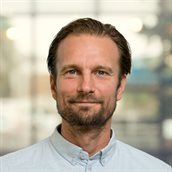What is energy poverty?
Energy poverty is nothing new. The Dutch word for it (energiearmoede) first appeared in the Van Dale dictionary of the Dutch language in 2018 and energy poverty was also an issue in the years that followed, with 7% of households in the Netherlands facing this problem. That amounted to some 550,000 households in total. Almost half of these cases involved a combination of factors:
- Relatively low income
- Insufficiently or poorly insulated home
- High energy tariffs and a high energy bill
This was therefore before the coronavirus pandemic, the war in Ukraine, and high inflation made this an even greater and more urgent problem.
Lack of an integrated approach to energy poverty
It was thus foreseeable that more and more households would run into problems due to their energy bills. That is partly why tackling energy poverty is now very high on the priority list of central government, provinces, municipalities, and housing associations.
So far the government has mainly taken financial measures to address energy poverty. Without this compensation, the number of energy-poor households would have doubled compared to 2020 to over one million. All the parties involved are aware that more needs to be done and are already hard at work.
The only thing is, this work is being carried out in many different places and in many different ways. The measures and methods chosen are fragmented and, as a result, far from effective. We quickly need a structural approach to energy poverty that prevents more households from getting (further) into trouble.
GDPR prompts an old-fashioned approach
Municipalities are an example of the fragmented approach being taken to energy poverty. Although they are pulling out all the stops to cushion the effects of higher energy prices and protect households, our survey on energy poverty in the Netherlands, conducted among 149 municipalities, shows that policy officials are coming up against all kinds of implementation problems:
- Staff shortages
Municipalities are also suffering from staff shortages. - Laws and regulations
Obstructive laws and regulations are making it difficult for housing associations to insulate their properties more quickly. - GDPR and privacy
Using data analysis, it is technically possible to precisely identify higher-risk households. Unfortunately, the GDPR is a barrier to this. In the municipality of Rotterdam this even prompted the council to take the old-fashioned approach of knocking on doors to find households that could do with some help.
Growing gap
If we zoom out a little further, we can see another major problem: there is no agreement on the concept of energy poverty. A few years ago, it was mainly regarded as a poverty issue directly related to disposable income. It is now clear to everyone, however, that the role played by the condition of a home cannot be underestimated.
Residents of poorly insulated homes are more likely to experience energy poverty than people with the same disposable income who live in well-insulated homes.
On the other hand, disposable income is still a key factor. Households with more to spend can take insulation measures more easily. If they also have solar panels and a heat pump installed, they will no longer have to worry about their energy bills.
Meanwhile, our research also shows that almost 1 in 6 households in the Netherlands currently have a home with low energy efficiency, but cannot change this on their own, as they have no control over the property or insufficient means.
In total, over 1.4 million households are thus unable to actively participate in this aspect of the energy transition and also currently have no prospect of benefiting from a structural solution to this problem.
A poverty and a sustainability issue
When defining the concept of energy poverty, it is therefore important not only to look at energy bills and disposable income. The condition of the property also plays a role. In other words, energy poverty is both a poverty issue and a sustainability issue.
Tackling energy poverty requires better collaboration
Properly identifying the problem is the first step towards developing a successful integrated approach to energy poverty – a structural, multiannual approach, in which various layers of government and policy areas collaborate more effectively than at present.
There is also a need to improve collaboration between governments and other parties, such as housing associations, homeowners, construction and installation companies, and suppliers of sustainable solutions. It would help enormously if all these parties managed to share information on problems, possible solutions, and practical experiences with each other in an accessible way. And not only nationally, but also, in particular, at provincial, regional, and local levels.
‘If different parties adopt different approaches, it creates fragmentation, which is actually counterproductive.’ - Diana Vonk Noordegraaf, Senior Consultant Strategy and Policy
A joint mission
How do you bring all these different parties together? Amber Geurts, innovation policy researcher at TNO: ‘It would help enormously if we could create a mission-driven ecosystem that focuses on energy poverty. This system could make an important contribution to a shared knowledge infrastructure, collaboration within and between regions, and the scaling-up of solutions.’
‘A mission focuses on solving a social problem and promotes innovation and collaboration with a view to achieving a specific, common goal. In turn, an ecosystem encourages closer collaboration between organisations and people so that they work together to find a way to address energy poverty in the Netherlands.’
‘By working together to analyse the problem, explore possible solutions, and test them in practice, a rapid learning curve is achieved and a proven approach can be scaled up faster.’
More direction, involvement, and coordination
Last year, in its public campaign on the subject of energy poverty, the Dutch government indicated that municipalities would be taking action. This put pressure on municipalities. The fact that the national budgets, spending deadlines, and government plans are still being worked on does not help.
Consequently, municipalities indicated in our survey that they really need support from the Dutch government to tackle energy poverty and would like to see more direction and involvement from central government, as well as more coordination between central government and the municipalities. Municipalities are keen to go beyond ‘sticking-plaster solutions’ and do not want to reinvent the wheel every time when tackling energy poverty.
'Make haste slowly'
‘With a complex problem like energy poverty, it’s a good idea to first take a helicopter view and carry out a system analysis,’ says Diana Vonk Noordegraaf, Senior Consultant Strategy and Policy at TNO.
‘And, yes, I know that seems to go against the urge to act quickly. This is an urgent problem, after all. But if different parties solve the problem in different ways, it creates fragmentation, which is actually counterproductive.’
‘So our advice is: make haste slowly. After all, jointly drawing up a multiannual strategic plan in which all authorities and stakeholders play their part may cost you extra time to begin with, but it is necessary to achieve a comprehensive joint approach that is integrated and effective.’
Tackling energy poverty in the Netherlands: 4 recommendations
- Inspiring mission
Formulate an inspiring mission with an overarching and coherent approach to energy poverty in the Netherlands. This way, all the different policy areas and parties involved (national, provincial, regional, and local) know what they are working towards together. This helps to streamline interests and actions between authorities and policy areas, allowing policymakers to create policy, develop agendas, and set up initiatives that help tackle energy poverty in the Netherlands in the short and longer term. - Organised coordination
Well-organised coordination is an essential part of a coherent, cross-domain approach. - Regional mission-driven ecosystems
Develop regional mission-driven ecosystems that focus on this problem. If different parties work closely together, it becomes easier to bring focus to the task of tackling energy poverty. In this way, we close the ‘tactical gap’ between strategic goals and operational measures. In addition, better collaboration helps build the knowledge infrastructure and scale up successful solutions. - Monitoring and adjusting – adaptive governance
Apply adaptive governance: monitor developments in society and adjust policy accordingly, also in the interim. Making adjustments in this way helps you deal effectively with uncertainties and stay on course.
Want to know more? Contact us

Koen Straver
Consultant, social scientist





